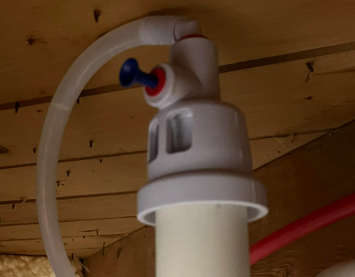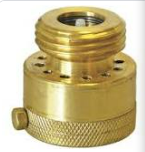Fern Bluff Municipal Utility District consists almost completely of residential connections. The most common contributors to backflow for residential homes are irrigation systems, water softeners and garden hoses.
Backflow is an unwanted reversal of flow that causes non-potable water to flow into your home or back into the public water supply. Good understanding of your system, and proper maintenance/testing are the best ways to prevent that from occurring.
Irrigation Systems
As a home owner it is important to understand what all comes with owning and operating an irrigation system. There are several things to know about how to keep an effective system that keeps your yard looking great and your water safe.
- Backflow Prevention – An irrigation system is required to have a backflow prevention device (usually a double check valve) and it should be tested on installation and every 7 years thereafter. If you inject chemical you will need to make sure that you have a RPZ (reduced pressure zone) valve to protect against pressurized backflow with possible hazardous chemical in it.
- Controller Maintenance – Keeping up with your watering days during watering restrictions, making sure that your run times are set properly and not overwatering.
- Leak Checks – Irrigation systems over time get worn or can become damaged from different yard activity or contractors. To help save yourself trouble and money, you should test run your zones during the day and make sure they are still watering the right direction and there are no damaged heads.
Water Softeners



Water softeners can be a great tool for reducing the hardness in your water. Water softeners should be set in grains per gallon. Take the water hardness in mg/l and divide that number by 17.1 and that will give you the grains per gallon setting. Our latest Drinking Water Report shows we range from 160mg/l to 208mg/l so water softener setting should be between 9-12 grains per gallon.
An essential function of the water softener is regeneration. That is where the salt and water (brine) are used to backwash the filter to remove the captured hardness in the media and to reset the filter media for the next cycle. During that process the backwash water drains from the softener. It is important to make sure there is a proper air gap device installed between the softener and the drain line it is tied to. Making sure you have a proper airgap device will protect your potable water system.
- Backflow is an unwanted reversal of flow that causes non-potable water to flow into the public water supply or into your home.
- Non-Potable Water is water that is not safe for human consumption. That doesn’t just mean the it is contaminated or dangerous, it also applies to water of an unknown quality for example an irrigation system water once it goes through the backflow prevention device. The water then could be introduced to potentially unwanted materials such as chemicals in your yard, fertilizers (from bags or possibly from pets).
- Backflow Prevention is accomplished by employing a device to prevent the undesirable reversal of flow into a potable water supply.

Garden Hose
Garden hoses are one of most common ways to cause a potential backflow. A drop in pressure from the municipal system or inside your home can turn a water hose that has been left in a bucket, pool or dog bowl into a straw to suck water back into your home but there is also an easy fix. Installing a vacuum breaker at any outside spigot that has a water hose will prevent the unwanted reversal of flow.

